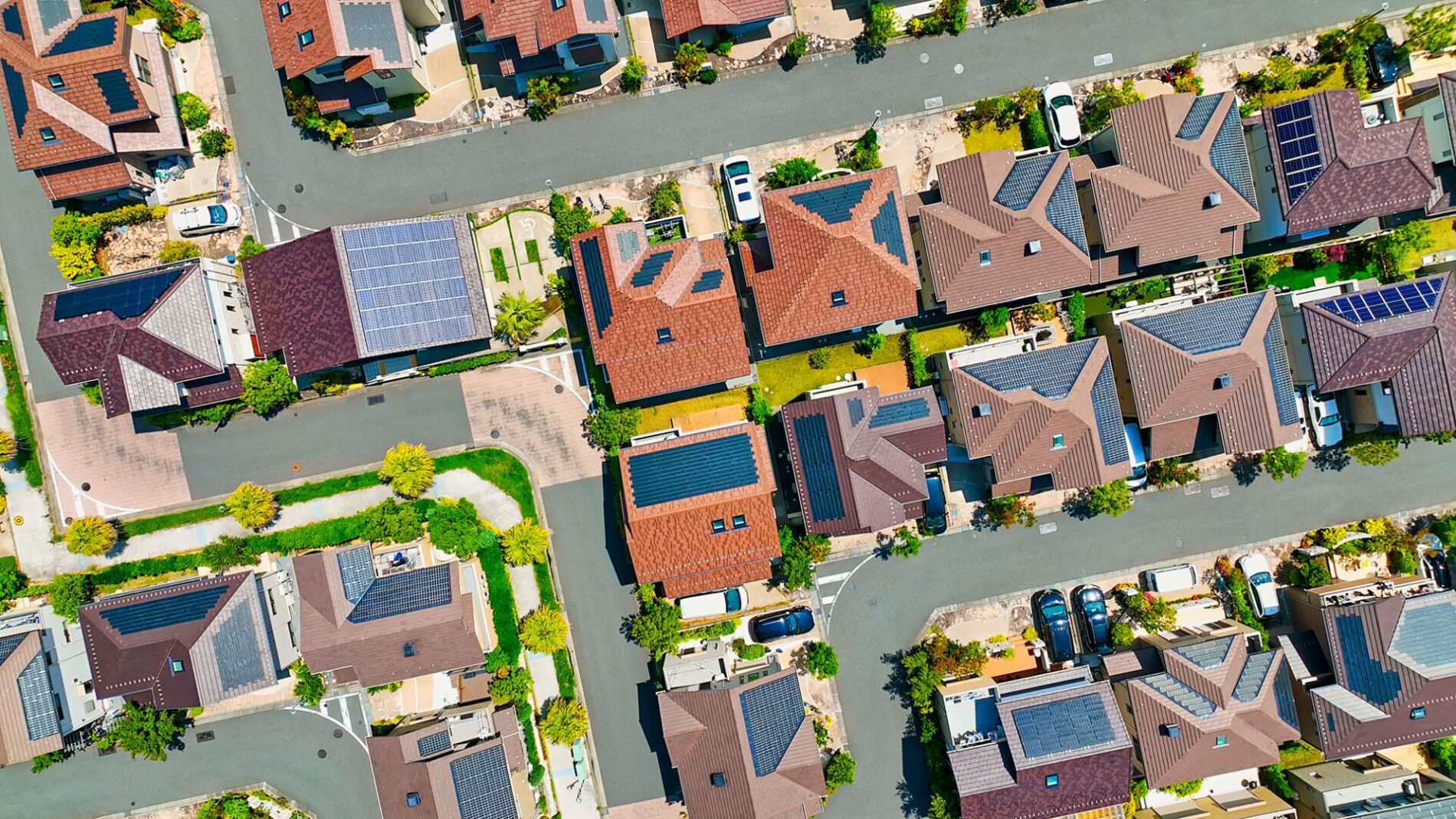In the heart of southwest Florida, a revolutionary community has taken shape, redefining the concept of sustainable living. Babcock Ranch, developed by Kitson & Partners, is the first fully solar-powered town in the United States. This groundbreaking development combines cutting-edge renewable energy technology with thoughtful urban planning to create a community where sustainability and quality of life go hand in hand. Powered entirely by a 75-megawatt solar array operated by Florida Power & Light (FPL), Babcock Ranch represents a bold step toward environmentally conscious urban development.

The town’s energy infrastructure is the cornerstone of its zero-energy achievement. The expansive solar array that powers Babcock Ranch consists of over 650,000 solar panels spread across 440 acres. Capable of generating enough electricity to meet the needs of all its residents, the system ensures that Babcock Ranch maintains its commitment to sustainability. “We wanted to create a place where people could live sustainably without sacrificing comfort or convenience. Solar energy makes it possible,” said Syd Kitson, CEO of Kitson & Partners, the visionary force behind the community.
“We wanted to create a place where people could live sustainably without sacrificing comfort or convenience. Solar energy makes it possible”
The integration of solar energy into the town’s identity is comprehensive. Beyond supplying clean electricity, Babcock Ranch’s infrastructure supports resilience and energy independence. During Hurricane Ian in 2022, the town’s solar-powered design proved its worth. While surrounding areas faced prolonged power outages, Babcock Ranch continued to function with minimal disruption. This resilience stems from a combination of renewable energy generation and state-of-the-art technology, including a microgrid system that enhances energy reliability.
Babcock Ranch was not only designed to be energy-efficient but also environmentally harmonious. Every aspect of the town’s development was planned with sustainability in mind, from its landscaping to its water conservation efforts. The community employs sustainable landscaping practices that feature native plants requiring minimal water and maintenance. Additionally, a network of water-saving irrigation systems uses reclaimed water to reduce overall consumption. These measures align with Florida’s unique ecological challenges, including water scarcity and the need to protect wetlands.
Transportation within the community reflects the same commitment to sustainability. Babcock Ranch features a network of electric vehicle (EV) charging stations that encourage the use of EVs, reducing residents’ reliance on gasoline-powered vehicles. The town is also designed to be walkable and bike-friendly, with over 50 miles of trails connecting neighborhoods, parks, and other amenities. These features not only promote healthier lifestyles but also contribute to reducing the town’s overall carbon footprint.
Education and community engagement play a pivotal role in Babcock Ranch’s mission. The town’s school, Babcock Neighborhood School, incorporates sustainability into its curriculum, teaching students about renewable energy, conservation, and environmental stewardship. Hands-on learning experiences, such as tours of the solar array and lessons in water management, ensure that students understand the importance of sustainability from a young age. By instilling these values, Babcock Ranch is cultivating a generation of environmentally conscious citizens prepared to face the challenges of the future.
The community’s commercial and recreational facilities further reflect its commitment to green living. Restaurants, shops, and offices are all powered by solar energy, maintaining the town’s zero-energy status. Public spaces, including Founder’s Square, serve as hubs for community events and activities while showcasing energy-efficient design principles. Founder’s Square features shaded seating areas, energy-efficient lighting, and spaces designed to encourage social interaction and outdoor activities.
The design of Babcock Ranch extends beyond its energy systems to encompass a philosophy of resilience and adaptability. The town is located inland, away from Florida’s vulnerable coastline, reducing risks associated with rising sea levels and storm surges. Additionally, its construction incorporated measures to mitigate flooding, such as retention ponds and natural drainage systems. These features not only protect the town from environmental challenges but also enhance its appeal as a sustainable and resilient community.

Babcock Ranch’s success has been closely tied to its collaboration with Florida Power & Light, which operates the solar array that powers the town. FPL’s commitment to renewable energy aligns with Babcock Ranch’s mission, creating a partnership that showcases the potential of public-private collaboration in advancing sustainability. FPL has described the project as a “living laboratory,” offering insights into how renewable energy can be integrated into communities on a large scale.
The town’s economic impact is another testament to its innovative model. By attracting environmentally conscious residents and businesses, Babcock Ranch has established itself as a hub for green innovation and entrepreneurship. Local businesses benefit from the town’s zero-energy infrastructure, which reduces operational costs and aligns with the values of sustainability-minded consumers. This economic model not only supports the local economy but also demonstrates the financial viability of sustainable development.
The residential aspect of Babcock Ranch is perhaps its most striking achievement. With over 1,000 homes already completed and more under construction, the community offers a diverse range of housing options designed to accommodate families, retirees, and professionals. Each home is built to meet stringent energy efficiency standards, incorporating features such as energy-efficient appliances, high-performance insulation, and smart home technology. These elements ensure that residents can enjoy modern, comfortable living while minimizing their environmental impact.
Babcock Ranch has also become a model for community engagement in sustainability efforts. Regular events, workshops, and educational programs encourage residents to adopt environmentally friendly practices in their daily lives. From composting and recycling initiatives to classes on sustainable gardening, these programs foster a culture of shared responsibility for the community’s environmental goals.
The success of Babcock Ranch has drawn attention from developers, urban planners, and policymakers across the United States. Kitson hopes that the town will inspire similar projects nationwide, demonstrating that sustainable development is not only feasible but also desirable. “This is a model for future growth that aligns with environmental needs and community aspirations,” Kitson explained. By proving that sustainability and quality of life can coexist, Babcock Ranch challenges traditional notions of urban development and paves the way for a greener future.
The significance of Babcock Ranch extends beyond its immediate achievements. As cities worldwide grapple with the effects of climate change, the town offers a blueprint for how communities can reduce their carbon footprints while enhancing resilience and quality of life. Its emphasis on renewable energy, sustainable design, and community engagement provides a holistic approach to tackling environmental challenges.
While Babcock Ranch is the first fully solar-powered town in the U.S., it is unlikely to remain the only one for long. The town’s success has sparked conversations about how similar models can be implemented in other regions, particularly as renewable energy technologies continue to advance and become more cost-effective. Developers and policymakers are looking to Babcock Ranch as proof that sustainable communities are not only possible but also practical and desirable.
Babcock Ranch represents a shift in how we think about urban development. By prioritizing renewable energy, sustainability, and resilience, it demonstrates that communities can thrive while respecting the planet’s ecological limits. As Kitson aptly put it, “Solar energy makes it possible.” This sentiment encapsulates the transformative potential of renewable energy in shaping the future of urban living.


















